As the saying goes “First, we eat. Then we do everything else.”
And so, as we dream about our next holiday destination, enjoy this list of the best 10 food experiences from all around the world. May it whet your appetites, and get you inspired to plan your next delicious food holiday in a new destination, or return to a country you think has the best food in the world. Either way, bon appétit and let the journey begin!
10 Best Food Experiences FOR YOUR BUCKET LIST In 2022
1. Spam Musubi from Hawaii, USA
A uniquely Hawaiian creation and firm local favourite, you can find Spam Musubi in restaurants and convenience stores all over Hawaii.
It consists of a teriyaki marinated slice of Spam placed on top of a block of freshly steamed rice and wrapped in nori ( dried Japanese seaweed ). Its deliciousness is not to be underestimated and it comes with an intriguing history to boot.
During World War 2, Spam luncheon meat became popular in Hawaii as it was relied upon as an important war ration. Salty, delicious and a vital source of protein, another big plus point was that a can of Spam had a labelled expiration date of 3 years, but unopened, could remain edible for years.
Did you know? Spam Musubi made national news when then-President Obama ordered it for lunch during a golf excursion in Hawaii back in 2008.
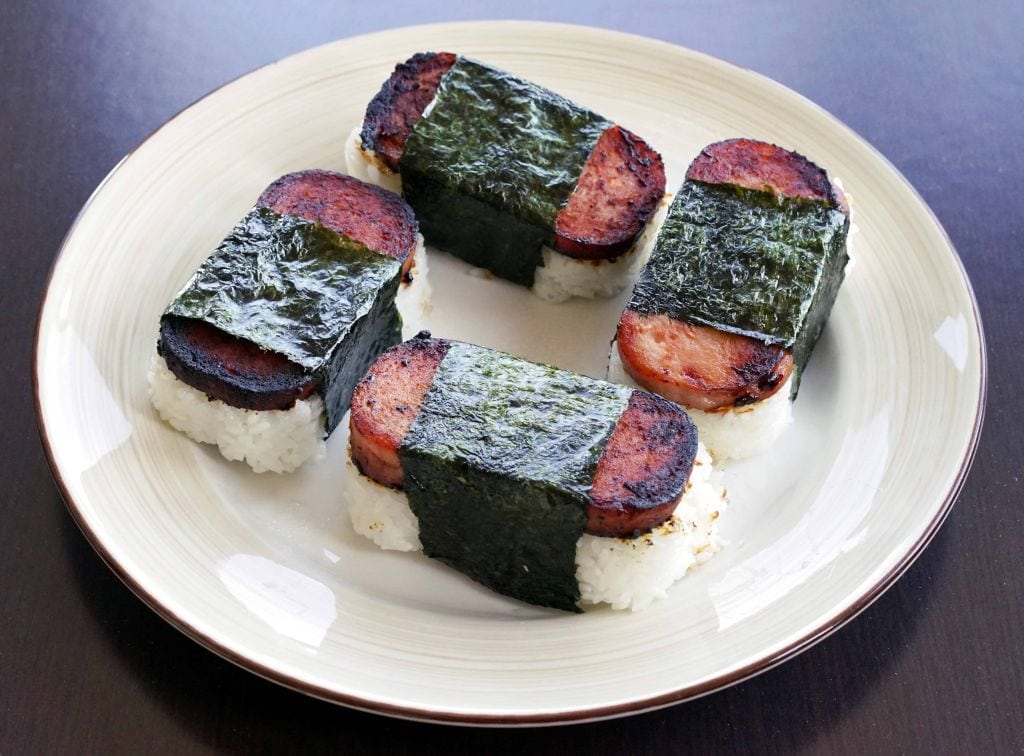
2. Spotted Dick from the UK
Whilst the name ‘Spotted Dick’ may sound bizarre, in actual fact, this is a well-loved dessert ( or pudding – as the Brits call it ) in the UK.
How did Spotted Dick get its name? Well, ‘spotted’ refers to the dried fruit which resembles spots. Whilst during the 19th century in England, the pudding was called dick or dog. Thus you have Spotted Dick – other names are Spotted Dog or Railway Cake.
Traditionally, Spotted Dick is made of suet, a popular ingredient in the UK. It’s basically saturated fat – there’s meat suet and also vegetarian suet. Meat suet is the fat around the kidneys of animals such as cows and goats. The fat is removed, chopped and boiled to remove impurities. But there’s also the option to forgo the suet altogether and replace it with butter or vegetable shortening.
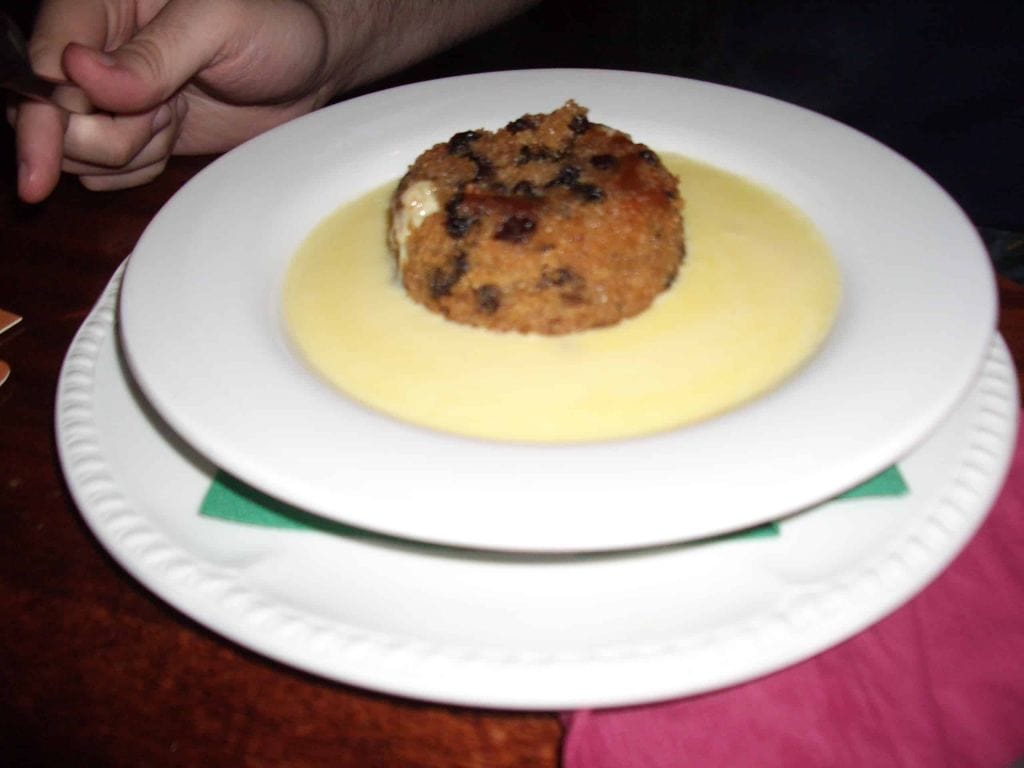
3. Souvlaki from Greece
Go on a delicious food holiday to the Land of Greek Gods. Amongst their culinary delights are moussaka, spanakopita and gyros but you must also eat like a local and try street souvlaki.
The simple definition of souvlaki is grilled meat on skewers. Meats can vary from beef, chicken, lamb or pork and should be grilled fresh to order. Greeks will typically eat souvlaki in a pita that is stuffed with the meat along with tomatoes, onions, tzatziki sauce, chilli pepper flakes and beat this – French fries.
One souvlaki skewer is never enough, hence it’s good to know that the plural of souvlaki is souvlakia.
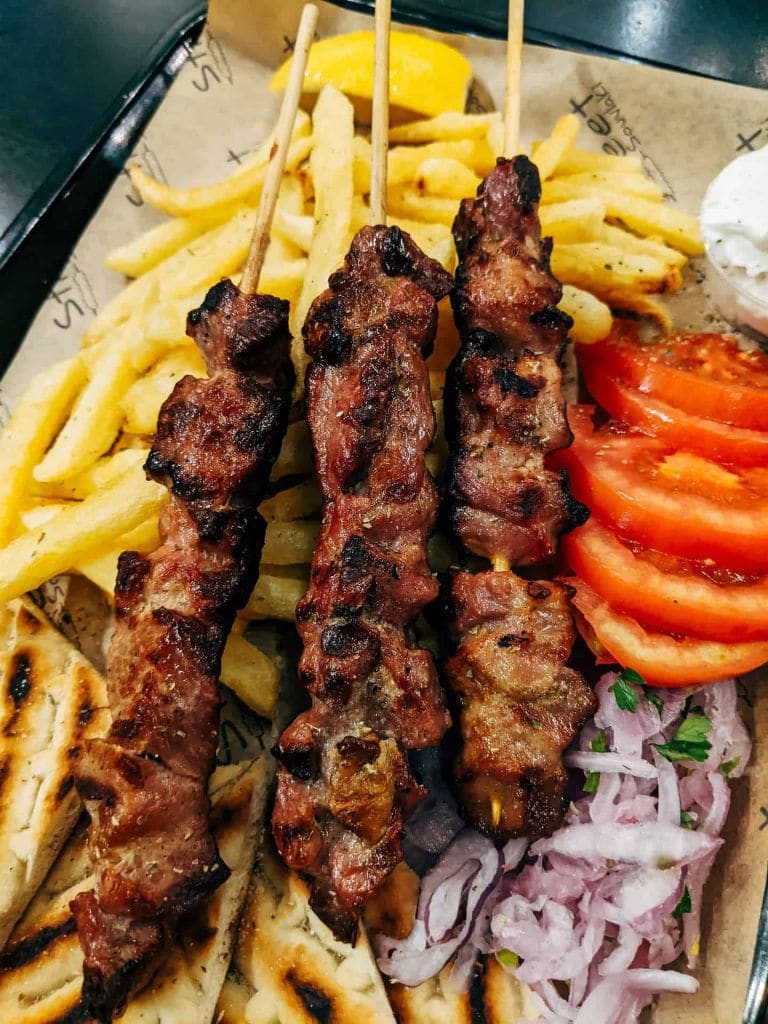
4. Paella Valencia from valencia, Spain
Paella, Spain’s most famous culinary export and the national dish have as many variations as there are cooks. The one thing every variation of paella has in common besides the rice and saffron is that it is a very social culinary occasion.
In Valencia where this ancient rice dish originated, paella is made with rabbit and snails instead of seafood. Spain’s master chefs say that the secret behind the delicious rice dish is that the ingredients must be fresh and made to order, plus finding the precise cooking times for each component. The rice should be just cooked and have a slight chew, or al dente.
Did you know? The tastiest part of paella is socarrat ( from the Spanish verb “to singe”) – the caramelised almost burnt layer of crunchy rice at the bottom of the paella pan. Also, paella pans which have been used for many years add to make the dish more flavourful.
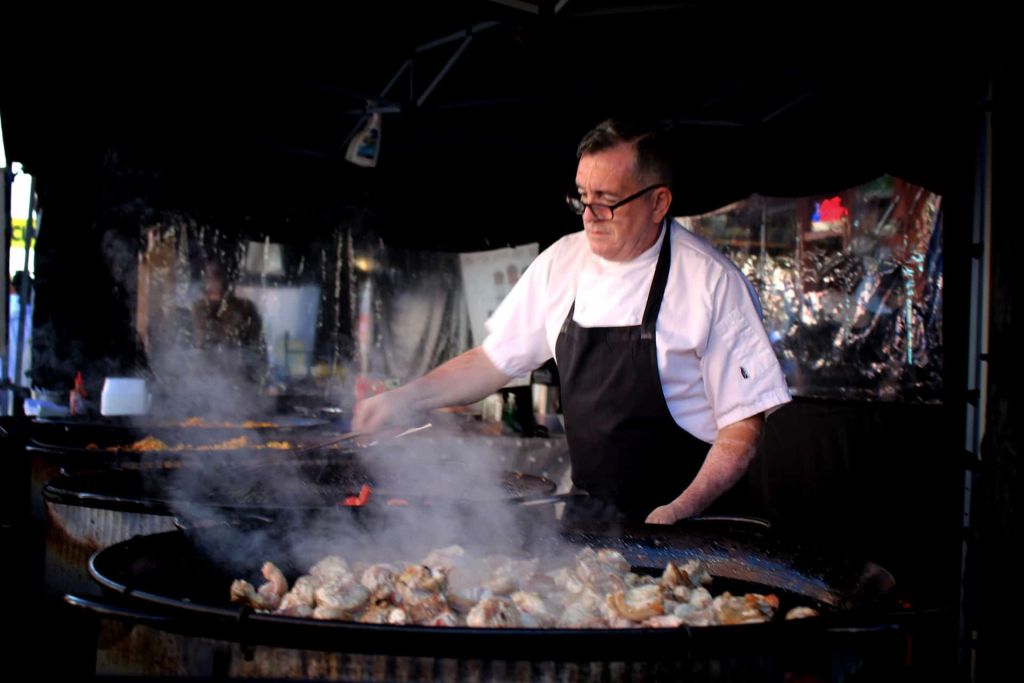
5. Pizza Napoletana from Naples, Italy
With a blend of simplicity and artistry coming together, Pizza Napoletana is a national treasure in Italy. The pizza is under the protection of the Associazione Verace Pizza Napoletana which states that authentic Pizza Napoletana cannot be copied without the consent of its originators in Naples, Italy.
Prepared with the simplest and freshest ingredients – a basic dough, raw tomatoes, fresh mozzarella cheese, fresh basil and olive oil – these ingredients are sourced locally from the neighbouring towns and farms of Naples – ingredients sourced from other parts of Italy will void the pizza’s authenticity. And of course, a traditional brick oven is used to cook the pizza.
You wouldn’t expect anything less from the birthplace of pizza, arguably the world’s most iconic and best-loved comfort food.

6. black pudding from Ireland
It sounds like a bizarre, exotic food so what is black pudding and what does it taste like?
Black pudding, also known as blood sausage or blood pudding is made from pork blood and pork fat with onions, herbs, spices, and cereals like oatmeal and barley.
Does it taste like blood? Well, no it doesn’t. If no one told you that you were eating blood, you would remain blissfully unaware. Chunkier than a typical sausage with dark-coloured skin, it tastes savoury, herby, nutty and spicy. This of course differs according to the chefs.
In Ireland, black pudding has achieved superfood status in Ireland because of its rich iron and protein content. The humble black pudding has come a long way from its origins, where the need for using up the blood from slaughtered pigs to avoid wastage gave birth to the dish’s invention.
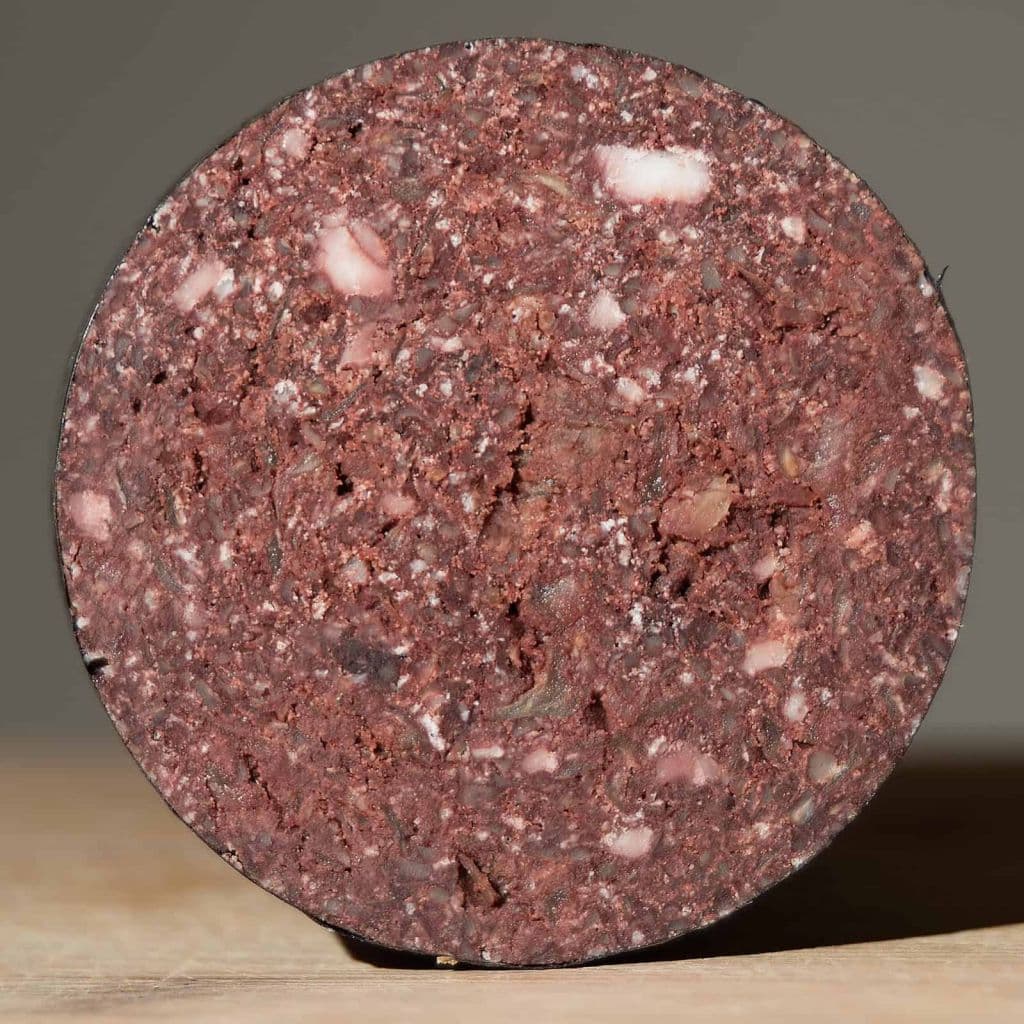
7. camel from Dubai, UAE
Camel is regarded as a national speciality food in the UAE, a special dish that is served at weddings, births and funerals. It’s served as a camel platter, and you can also find other foods made from camel – burgers, kebabs, milk, ice cream, chocolate and cheese throughout the UAE.
What does camel meat taste like? The meat is actually very juicy and tender especially if the camel was slaughtered at a very young age. The camel’s hump which is high in fat is exceptionally flavourful, tasty, soft and yet not greasy.
Camel meat is a raspberry red to dark brown in colour and is considered to be very healthy compared to other meats. Whilst camel milk has less fat and cholesterol than cow milk plus it is rich in Vitamin C, calcium, iron and minerals.
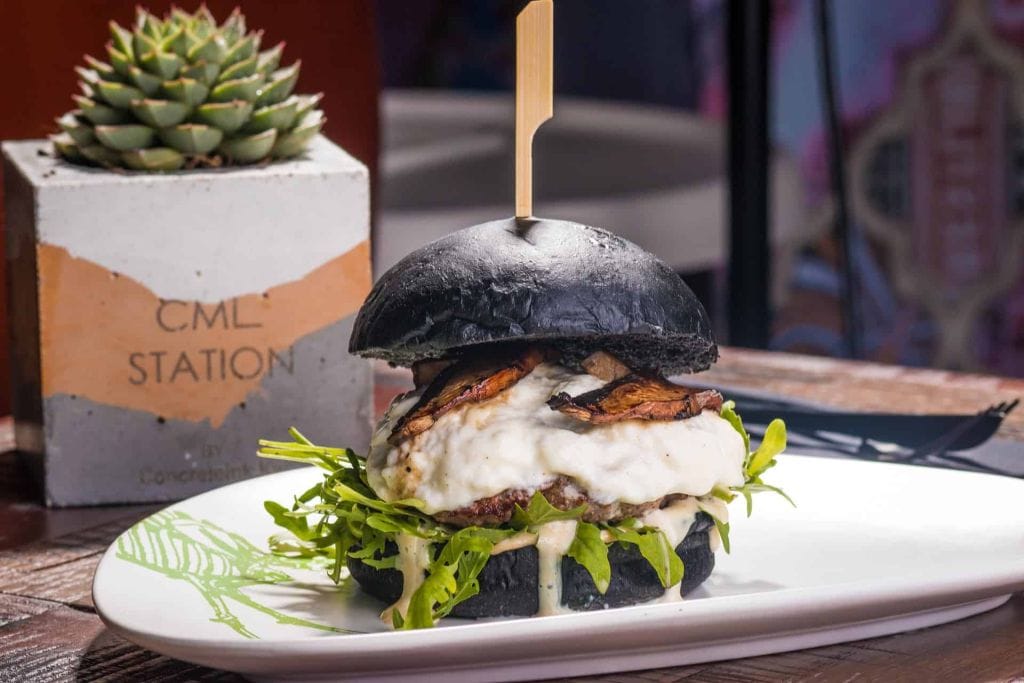
8. korean Army Stew from South Korea
One of the most popular dishes in South Korea is army stew or budae jjigae. It is a fusion stew that incorporates American style processed food like sausages, spam, canned baked beans and sliced cheese with ramen noodles, local vegetables and much more.
After the Korean War in the early 1950s, food was extremely scarce, so surplus processed foods from the US military bases were a great help. Hence the name budae is a Korean general term for a military base and jjigae which means soup or stew.
It’s easy enough to prepare at home, cheap to make, and great comfort food is eaten together with family and friends.
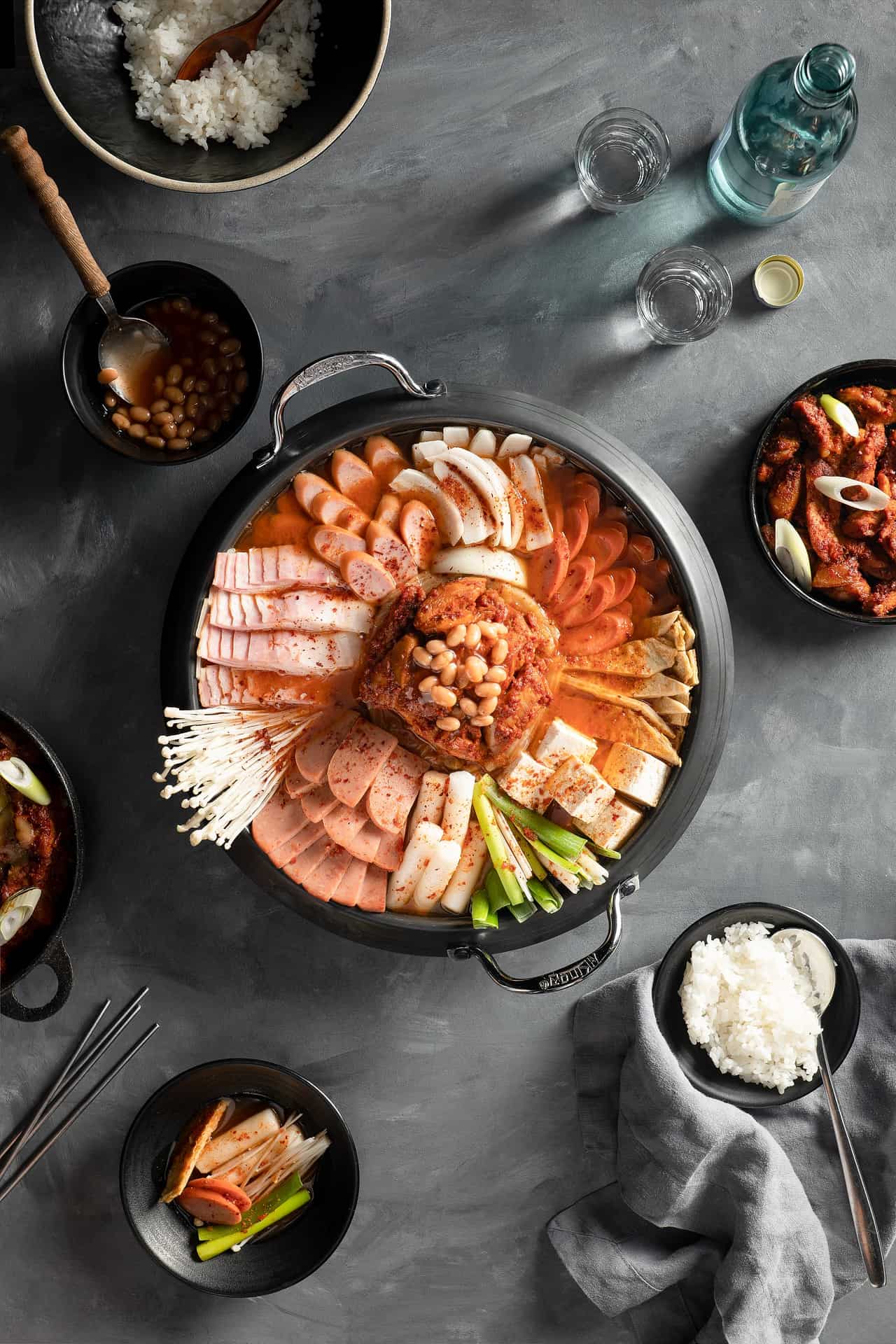
9. Stinky Tofu from Taiwan
Stinky tofu is often referred to as Taiwan’s national snack food. This much-beloved Taiwanese dish is full of live bacteria and gives off an intense putrid odour. It is said that if you can stomach the stench, it tastes much better than it smells.
Legend says stinky tofu was accidentally invented in China hundreds of years back when a struggling tofu merchant realized his bean curd and soy milk mixture had started to ferment, turning green and foul-smelling. Somehow, he bit into the concoction and discovered it was quite tasty. It soon became popular and was even on the list of imperial foods served at the Qing Dynasty palace.
These days, stinky tofu comes in countless varieties – it’s steamed, in soup, deep-fried and even an ice cream flavour! Plus it is touted for its many health benefits such as preventing osteoporosis, reducing cholesterol and lowering the risk of cancer.
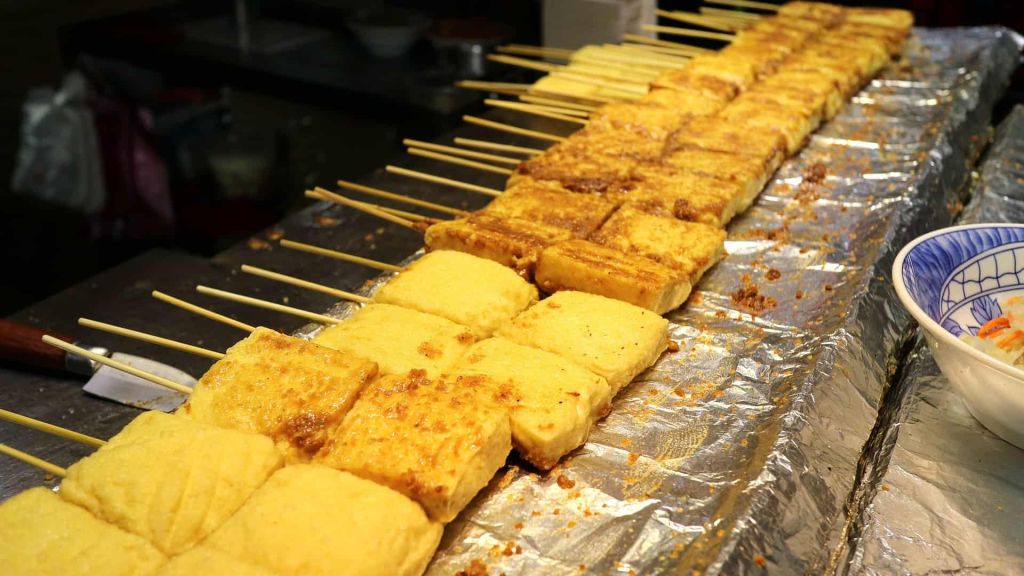
10. sago worms (butod) from Sabah, Malaysia
When in Borneo, eat like a native and try their local delicacy – Sago Worms or Sago Grub or Butod as it is known locally.
Butod is the larvae of the Sago Palm Weevil, a species of snout beetle that consumes sago palm in its infancy. The Sago Worm can grow as big as the little finger and looks like a giant maggot.
Whilst you may not be sold on its description, rest assured that the local Kadazandusun tribe have been eating sago worms for centuries. It is touted for its high protein and fat content.
Take the ultimate challenge of eating a live sago worm – still wriggly and warm. But if you chicken out, you can always cook it – have it stir-fried with sauce, garlic and chillies, grill it, bake it or smoke it
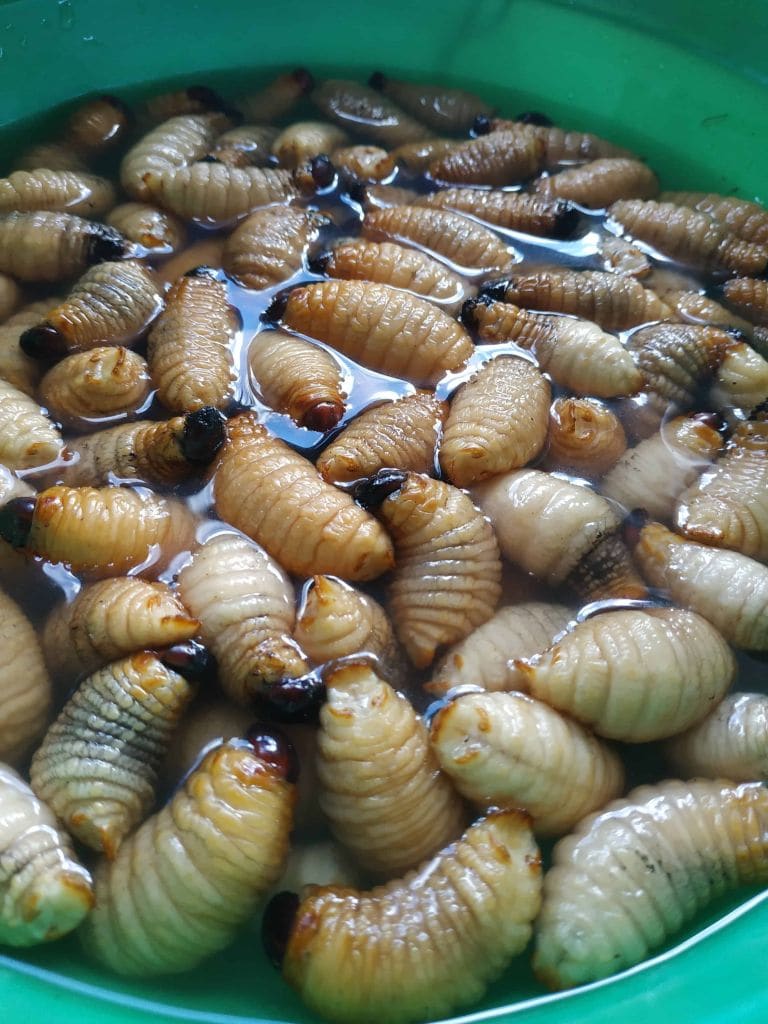
You might also enjoy these articles:
